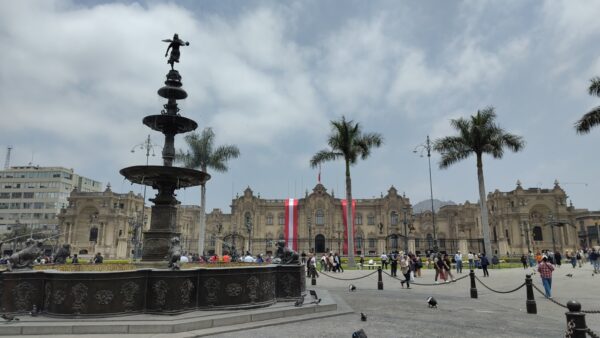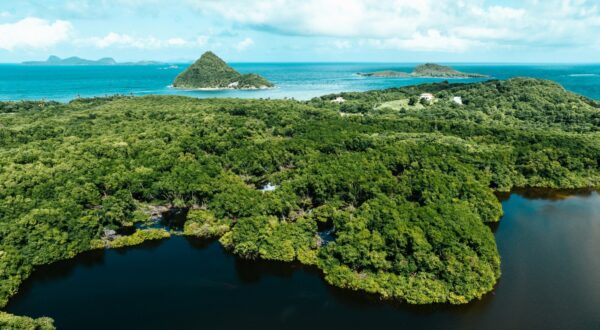Europe needs 'coalition of the willing' to rescue its global leadership in the fight against climate change
The EU, plagued by internal differences, is on the verge of losing its long-standing leadership in climate change policy. If the European Commission is unable to forge a consensus on an ambitious climate policy, a smaller 'coalition of the willing' should take up the climate banner.
Share

The EU has long been in the forefront of the fight against climate change. It led the way in setting the 2°C global warming limit, with EU Environment Ministers agreeing this 20 years ago, in 1996. A year later the EU member states agreed to a more ambitious target than the rest of the industrialised world for the Kyoto Protocol’s first commitment period (2008-2012) – a reduction of emissions by 8% below 1990 levels in comparison to an average of 5% emissions reduction for industrialised countries.
When in 2001 George W. Bush announced that the US would not ratify the Kyoto Protocol, the EU pushed its implementation forward. The EU’s 2009 Energy and Climate Package implemented the 20-by-2020 targets adopted by the EU’s Heads of State: 20% reduction in greenhouse gas emissions compared to 1990 levels, 20% of energy from renewables, and 20% improvement in energy efficiency by 2020.
The EU’s 2020 target was complemented by a conditional 30% goal “provided that other developed countries commit themselves to comparable emission reductions“. In the difficult years that followed the collapse of the Copenhagen summit in December 2009, the EU maintained its faith in the need for climate action and held out for a fully multilateral approach to climate, despite increasing noise from some quarters in the EU to slow down action. It pushed forward with securing the Kyoto Protocol’s second commitment period for 2013-2020, with a 20% reduction goal for that period from 1990 levels.
In addition, the EU, as well as some of its member states, were leading by example by decoupling economic growth from carbon emissions and developing low-carbon technologies. As a result the EU created a low-carbon sector with over two million jobs in the area of energy efficiency and renewable energies, with a positive impact on economic growth.
Dark clouds
But in the meantime the EU was becoming increasingly divided over the further development of its climate policy. In 2012, Poland vetoed the EU’s Low Carbon Roadmap for 2050. In December 2014 the Heads of State still managed to agree to a new target for 2030 of “at least 40% domestic reduction in greenhouse gas emissions”, despite the threat of a Polish veto.
The adoption of the 2030 target was celebrated as a “landmark deal”. Yet NGO’s and climate analysts were extremely disappointed by the outcome. They pointed out that between 1990 and 2014, the EU’s greenhouse gas emissions decreased by 23%. Sticking to a 40% emissions reduction target for 2030 would mean that in the coming years emissions will have to decrease by slightly over 1% annually. At this speed, the EU will achieve emissions reduction of only around 60% mid-century, far less than the 80-95% emissions reduction target adopted by the Council in 2011. Limiting warming to 1.5°C would mean at least 90-95% reductions by 2050.
But there was still one hope: by adding “at least” the EU left the door open to an increase of the target after Paris. After the adoption of the EU mandate for the negotiations in Paris in September last year, Climate Commissioner Miguel Arias Cañete presented the EU as a “deal maker and not just deal taker”. This hope was dashed, however, after Paris. Although the climate negotiations in the French capital turned out to be a success and the Paris Agreement mentions a goal of “pursuing efforts to limit the temperature increase to 1.5°C above pre-industrial levels”, the EU failed to rise to the occasion. In its Communication of March 2016 the European Commission stuck to its 40% target, ignoring the changed international reality and its own achievements over the recent years.
Unrealistic ideas
By not upgrading its emissions reduction goal, the EU is failing to lead – just at a time when others are ready to follow and decarbonisation technologies are rapidly becoming more affordable. This is not only bad for the climate, but also for the European economy.
So what can be done?
In the past EU leadership in the fight against climate change has largely been the result of the cooperation between the European Parliament and the European Commission, supported by some member states. Importantly, it was not just talk but backed by real and substantive action. In many cases it took a while before ambitious targets were agreed upon by the Heads of State of EU member states in the European Council, but the proposals were there, waiting for the window of opportunity in the Council to open. That was the case, for example, with the adoption of the first renewable energy directive in 2001 and in March 2007, when the 20-20-20 by 2020 targets were unanimously agreed upon during the German EU presidency.
At this moment, however, the European Commission is not pushing the climate agenda, presumably because it already has to face many other divisive issues. It can be argued that, taking into consideration the challenges posed by the refugee crisis and the slow economic recovery, the Commission should tread carefully in coming up with “unrealistic” ideas. But the difference between being a leader and a follower is the ability to come up with a vision that others can subscribe to – if not immediately, then in the longer term. It is clear that in the current political circumstances a unanimous agreement of all EU member states to more ambitious energy and climate targets would be improbable. But such a proposal by the Commission could at least initiate a much needed discussion about the EU’s role in the climate negotiations.
If the European Commission fails to do so, then the only solution is for a group of member states to form a coalition of the ambitious to push the climate agenda forward. Such a coalition should adopt a more ambitious emissions reduction target and cooperate closely on the path to its implementation. The legal framework for such cooperation can be found in the Treaty of Lisbon which significantly expanded the possibilities offered by what is called Enhanced Cooperation. According to Article 20 of the Treaty, a form of Enhanced Cooperation can be created by at least nine EU member states “to further the objectives of the Union, protect its interests and reinforce its integration process.”
Such a coalition wouldn’t only be driven by the need to deal with climate change but also by economic factors. Whereas the transformation towards a low-carbon economy poses a challenge to established industries, it also opens doors to new opportunities. The Paris Agreement will only speed up the innovation race in the area of low-carbon technologies, in which EU countries are increasingly losing their competitive advantage. The EU, with its knowledge base and large domestic market, is well equipped to regain it, provided the political will is there.
At the same time, a coalition’s effort should not replace the EU’s existing climate mechanisms, such as the EU ETS (Emisson Trading System) and its renewable energy policy directives. Care should be taken that laggards would not get a competitive advantage for their established industries. For this reason, the EU ETS needs to be strengthened further, especially if climate policies adopted in the more ambitious member states will enlarge the current oversupply of emissions allowances. Indeed, having to bear the costs of climate policy while being excluded from the benefits of cooperation in the framework of a coalition of the ambitious, laggard member states could reconsider their stance towards a more ambitious climate policy.
Time is running out
Faced with the emerging evidence of global climate damage, it is hardly time for the EU to slow down its climate action. Should it take this path, it risks not only losing its reputation as the leader in fighting climate change. Without a strong domestic market in renewable energies, energy efficiency and e-mobility, the EU is also putting at risk its technological leadership in the development of low-carbon solutions. For the sake of climate protection but also EU’s economy it should capitalise on the 25 years of leadership and action in this area before the advantages it has built up are lost. A coalition of the ambitious at the European level may be a game changer. If it worked in Paris, why should it fail in Brussels?
This article first appeared in Energy Post on 22 April 2016.












